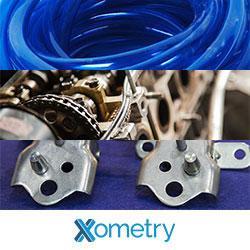How Fiber Optics Supports Agriculture
.jpg)
Agriculture has a reputation for being an old-fashioned industry. While farming has been around arguably longer than any other sector, it’s more tech-centric than many may think. One of the latest technology trends promising to shake up agriculture is fiber optics.
Fiber optics are most familiar as the underlying technology for gigabit home internet speeds, but this isn’t all they can do. As farms across the country embrace new technology, fiber optic connections could become a crucial stepping stone to digital transformation and precision agriculture. Here’s how.
1. Expanding Connectivity
The most straightforward application of fiber optics in farming is expanding internet connectivity in farms. Many large farms today practice precision agriculture, which uses internet of things (IoT) technology to refine and automate farming processes. This process can significantly improve operating costs and sustainability, but it requires a level of connectivity that smaller, more rural farms may lack.
Even in today’s hyper-connected world, 22.3% of Americans in rural areas lack broadband access. Fiber optics can transmit faster speeds over longer distances, so it’s the ideal technology to change that. Fiber internet could make high speeds more accessible even in remote areas, laying the groundwork for rural farms to run the devices necessary for precision agriculture.
2. Speeding IoT Connections
In addition to enabling more IoT connectivity, fiber optics can also improve the connections that farms do have. While wire delivery methods are the most common ways to get internet, fiber optics are more than 1,000 times faster and can reach 100 times farther. That can help farms make the most of their IoT networks.
With higher speeds and lower latencies, farmers can receive more real-time alerts from sensors throughout their land. That could include immediate warnings about broken infrastructure and trespassers or less urgent things like dryer-than-normal soil. With timely access to this information, farms can operate more efficiently, even with fewer workers.
3. Optimizing Water Consumption
While the internet may be the most popular use case for fiber optic technology, it’s not the only one. Fiber optics can also create reliable, precise and low-power sensors. Farmers can use these sensors to monitor water retention in their soil, helping them use only as much water as they need, becoming more sustainable.
Farms account for a considerable portion of water withdrawals, and they often take more than necessary. Fiber optic soil sensors can help by activating drip irrigation systems when they sense parts of the soil need moisture instead of running waterlines at set times. By basing these processes off need and not a schedule, farms can ensure their crops have enough water without taking too much.
4. Monitoring Plant Growth
Similarly, fiber optic sensors can monitor the soil to see how plants are growing. Deep, complex root structures are crucial for healthy, resilient crops, but farmers often can’t see if they’ve fostered these roots. Fiber optics can detect changes in the soil to confirm the size and location of these systems, informing farmers of their roots’ condition.
Fiber optic cables can carry a lot of information, offering more informative near-real-time insight into soil activity. By implementing these systems, farmers can learn how their crops are growing underground without digging anything. They can then adjust processes like watering and fertilizer use to ensure they foster the root systems they need.
5. Reporting Infrastructure Conditions
Fiber optics can also give farmers insight into their infrastructure’s state of repair. While tools like tractors and other vehicles are easy to inspect manually, water pipelines are hard to monitor in person. However, these systems need real-time monitoring, as 47% of all water pipeline maintenance is reactive, only occurring when something fails.
Fiber optic sensors offer a solution by communicating waterway conditions remotely. Utility companies and the farms that rely on them can then catch potential issues with this infrastructure as it emerges, enabling more timely maintenance. Farms can then ensure they have consistent access to clean water.
Fiber Optics Can Take Farming into the Future
Many of these use cases are recent innovations, but they’re growing. As more farms realize the need for implementing new technologies, fiber optics may be the vehicle that takes them into a more efficient, connected and sustainable future.
Fiber optics expand and improve precision agriculture, even for the most remote farms. This movement will help the nation’s agriculture sector feed more people with fewer resources.
Comments (0)
This post does not have any comments. Be the first to leave a comment below.
Featured Product

